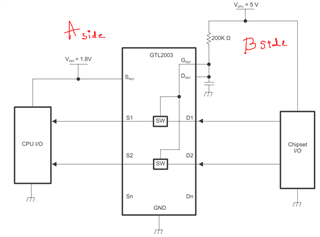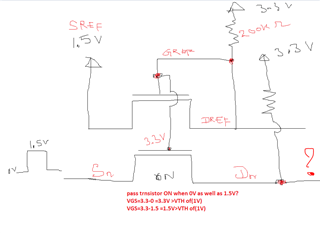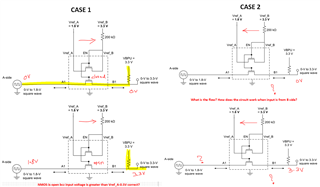Other Parts Discussed in Thread: LSF0108,
HI
Please help me understand with below queries about pass transistor based level translators
1) How do these pass transistor-based level translators work without any pullup resistors on Dn and Sn sides?
2) Are there any internal pull-up resistors on Dn and Sn sides?
3) What is the purpose of the Reference pass transistor? are all the Sn pins of different channels connected to SREF and Dn pins connected to DREF internally?
4) how does the down translation from Dn(B-side) to Sn(A-side) work? if B-side is at 5V and the A-side is 3V how does logic 1 on B-side translate to Logic one on A-side?
5) which side is Source and which side is Drain between Sn(A-side) and Dn(B-side)? what are the turn-on and turn-off conditions for these pass transistors?

Thanks
Santosh



